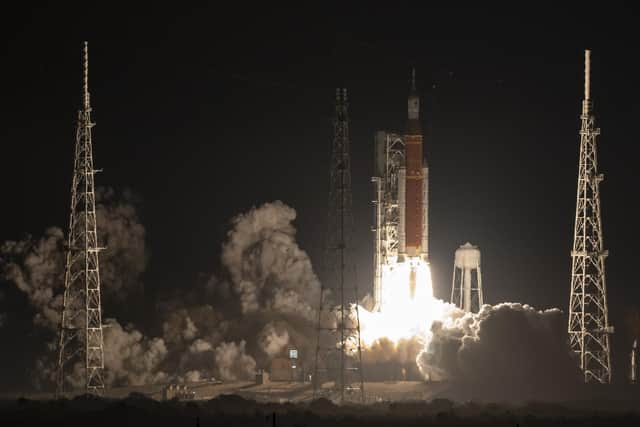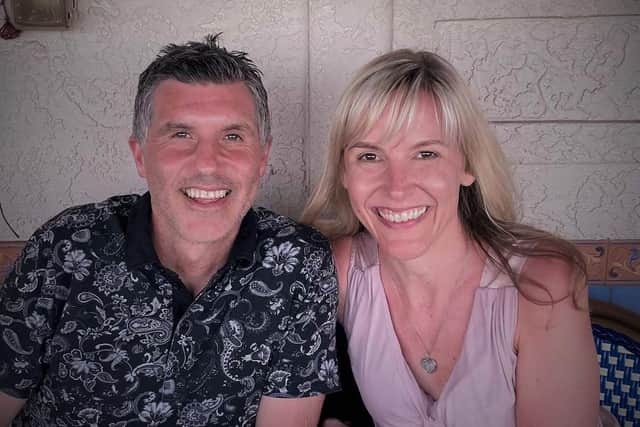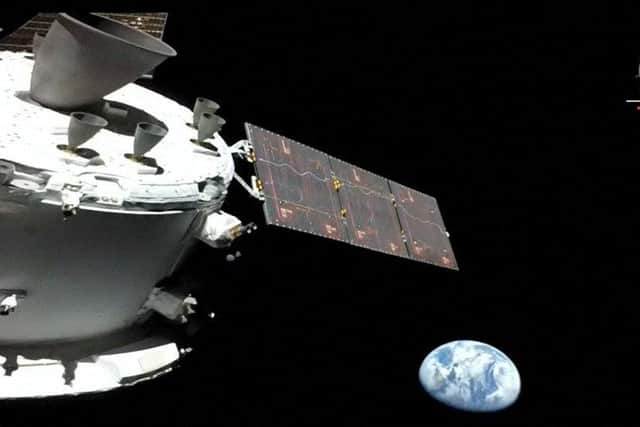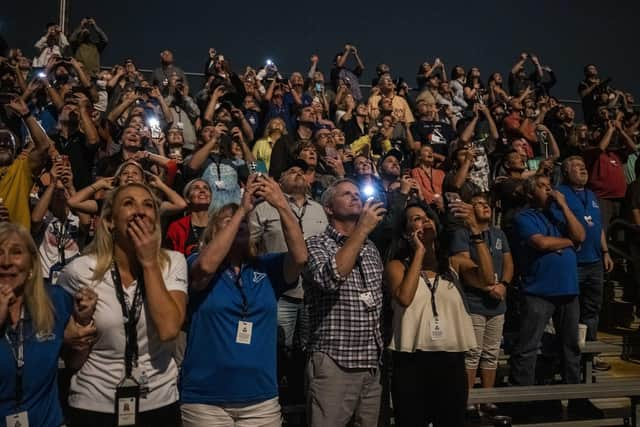A huge day for humanity and a Scot's role in helping people back to the moon
The lift off of the 100-metre tall Artemis signalled the start the first mission in 50 years to put people on the moon – and the first that will take a woman and a person of colour to the lunar landscape.
If an estimated 650 million people watched Neil Armstrong take humanity’s first steps on another celestial body, then billions are expected to witness the moment when barriers to equality long forged on earth are transcended in deep space, with Artemis astronauts due to land on the moon in 2025 or 2026 on a subsequent flight.
Advertisement
Hide AdAdvertisement
Hide AdIn Stockholm, Stuart Black, originally from Stirling, watched the mighty Space Launch System and pioneering Orion Capsule – which is being hurled into a lunar orbit and where Artemis astronauts will ultimately be stationed – begin its 25-day journey.


Formerly in charge of Nasa’a talent acquisition programme, his brief included finding the right people for mission control for Project Artemis.
He said: “It was a phenomenal moment. This is such a big statement for the world – a huge day for humanity.”
In 2019, Mr Black’s own space industry odyssey began when he was offered a job with KBR, a firm which delivers services to the space sector from mission planning to astronaut training, extreme environment testing as well as staffing every console in NASA’s mission control.
At mission control on Wednesday, following the successful Artemis I launch that came after two earlier attempts hampered by hurricanes and technical hitches, Charlie Blackwell-Thomson, NASA’s first woman Launch Director, told staff: "We are all part of something incredibly special, the first launch of Artemis. The first step in returning our country to the moon - and on to Mars.”


When Mr Black took the job with KBR, where he led talent acquisition across 25 NASA programmes in contracts worth more than $6bn, he was at first unaware of his impending role in the historic mission. After a few months in his new job, people started talking about Project Artemis.
Mr Black, 46, said: "At that stage I was unaware that Project Artemis was set to be perhaps one of the most significant diversity and inclusion events in history.
"Landing the first woman and the first person of colour on the surface of the moon was just mind blowing to me and I was certainly very conscious of the challenges faced by underrepresented and marginalized groups in the job-market and indeed society.”
Advertisement
Hide AdAdvertisement
Hide AdMr Black said there were a number of key characteristics sought in those seeking to develop their careers in space, beyond the expected pristine academic record.


He said: “The first one has got to be a passion for space and you can quickly drill down whether it is a facade or whether it is actually a passion and a deeply held interest.
"Attention to detail is also absolutely massive and that will be really tested at an interview. Of course, the big one for mission control is being able to remain agile under pressure.”
With experience built up in recruitment and talent acquisition in the energy industry in Australia and the US, Mr Black said working for the space sector had been a contrast to the “boom and bust” territory of the oil and gas sector.
Mr Black, a former pupil of Wallace High in Stirling and Dunblane High, said: "When you speak to people working for Nasa, it is really not about the compensation. Nasa doesn’t actually pay that highly. It’s more about being part of something historic and something that benefits humankind.


“I went to the space industry from energy, which is very much a boom or bust sector. It is very much dollar focused and everyone looks to see what they can get paid because next year, you could be a year out of work. You move into space – and I’d imagine it is the same if you were working with the ocean or in geography or geology – and they are not as concerned about these things. It’s about discovery and just being part of something for the greater good.
“Certainly, in the space industry things are more calm and balanced.”
Of his first day at KBR, Mr Black added: “After about only 30 minutes in the office, I was asked to join an executive meeting and I remember being fixated on all the framed pictures in the corridor, rockets, astronauts, the international space station.
Advertisement
Hide AdAdvertisement
Hide Ad"I was pretty much in awe of the opportunity to do something much more meaningful.”
If the Artemis 1 mission to get test Orion in deep space is successful, Artemis 2 is expected to lift off in 2024 with a crew to bring the spaceship around the moon. This will lead to Artemis 3, the first lunar landing since 1972, which is due to take place in 2025 or 2026.